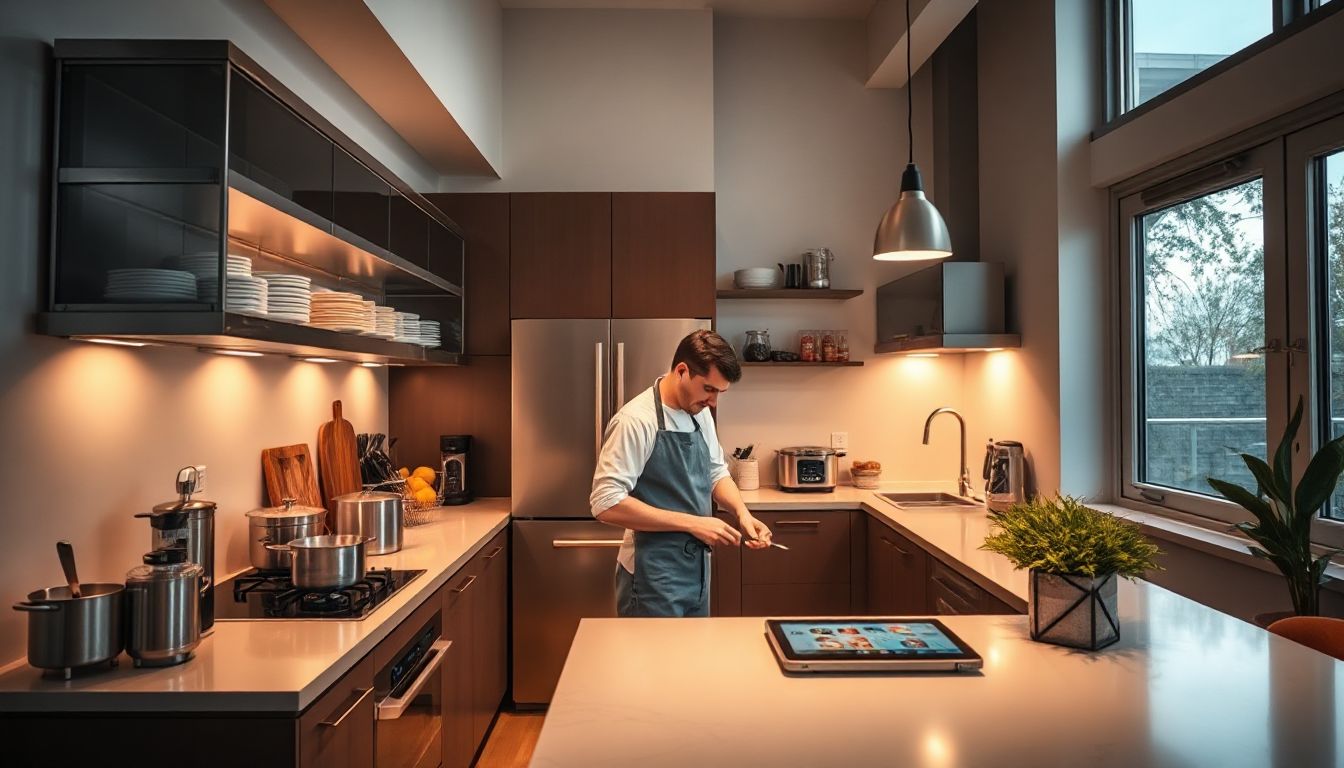
Complete Guide to Launching Your Food Business
Introduction
Cloud kitchens are changing how we enjoy food. Instead of dine-in tables, people are ordering meals online and having them delivered right to their doorsteps. This shift has made cloud kitchens hugely popular, especially during and after the pandemic. Many food entrepreneurs are now wondering: Can I start a cloud kitchen from home? This article covers everything you need to know about making it happen — from legal stuff to practical tips.
Understanding Cloud Kitchens and Their Business Model
What Is a Cloud Kitchen?
A cloud kitchen is a restaurant without a storefront. All cooking and preparation happen behind the scenes. Customers order through apps or websites. Then, the food gets sent out via delivery drivers. Unlike traditional restaurants, cloud kitchens focus only on delivery and takeout. They don’t have dine-in spaces, which cuts down on costs and allows more flexible menus.
Benefits of Operating a Cloud Kitchen
Running a cloud kitchen means lower costs because you don’t need a fancy location. You save money on rent and decor. Plus, you get to experiment with different menus or brands without big risks. More and more people are ordering food online, so there’s a growing market. According to Statista, the online food delivery industry in the US is expected to hit over $35 billion by 2024.
Challenges Faced by Cloud Kitchens
However, it’s not all easy. The market can be crowded, and standing out takes effort. Delivery logistics can be tricky, especially in busy cities. Also, navigating safety and health laws can be complex — especially if you’re thinking of doing this from home.
Legal and Regulatory Considerations for Home-Based Cloud Kitchens
Zoning Laws and Local Regulations
First, check your local zoning laws. Not every neighborhood or city allows commercial cooking from a home. Rules vary a lot depending on where you live. Some areas have strict restrictions, while others are more relaxed.
Food Safety and Health Codes
Getting proper certifications is key. You might need a food handler’s permit or HACCP (Hazard Analysis Critical Control Point) compliance. Your home kitchen probably doesn’t meet commercial standards, so inspections are common.
Licensing and Permits
Registering your business is a must. You might need a food establishment license or a specific food service permit. Always double-check the rules in your town. Skipping these steps could lead to fines or shutting down your operation.
Insurance and Liability
Insurance protects you against accidents or legal issues. You should consider getting product liability insurance, general business insurance, and maybe even workers’ comp if you hire help.
Setting Up a Home-Based Cloud Kitchen
Kitchen Infrastructure and Equipment
Your kitchen needs basic appliances like stoves, ovens, refrigerators, and prep stations. Small spaces require smart layout choices. Use vertical storage and multi-purpose equipment to save room.
Menu Planning and Pricing
Create a menu that’s easy to prepare and appealing. Focus on dishes that travel well and can be made quickly. Keep prices competitive by researching what customers in your area are paying.
Technology and Software
Partner with popular delivery apps like UberEats, DoorDash, or Grubhub. Use point-of-sale (POS) systems that sync with order platforms. Kitchen management software can keep your operations smooth and organized.
Branding and Marketing
Develop a solid online presence. Use social media to showcase your food and specials. Good reviews boost your reputation. Invest in professional photos and clear descriptions on delivery apps.
Operational Tips for Running a Successful Home Cloud Kitchen
Food Quality and Consistency
Recipes should be standardized. Make sure every dish tastes the same, every time. Keep quality control strict — happy customers mean repeat orders.
Delivery Logistics
Partner with multiple delivery services to expand your reach. Track delivery times closely. Fast, reliable service keeps customers coming back.
Managing Expenses and Profits
Stay on top of costs—ingredients, packaging, delivery fees. Keep detailed income and expense records. Analyze your data regularly to grow profit margins.
Customer Service and Feedback
Encourage customers to leave reviews. Use their feedback to improve. Responding promptly to complaints shows you care, earning their loyalty.
Real-World Examples and Case Studies
Many small entrepreneurs started their cloud kitchens from home and later expanded. For instance, some grilled burgers or baked goods in their kitchens, then moved into shared commercial spaces once they grew. Experts say that starting small, with focus and patience, is key.
Conclusion
Starting a cloud kitchen from home isn’t impossible — but it comes with rules and risks. Do your homework on local laws, focus on quality, and use tech tools to keep things efficient. This route can be a good way to test your food ideas without heavy upfront investment. Ready to turn your passion into a profitable home-based food business? Start small, stay legal, and put quality first. The road to success is made of careful planning and a lot of delicious food!